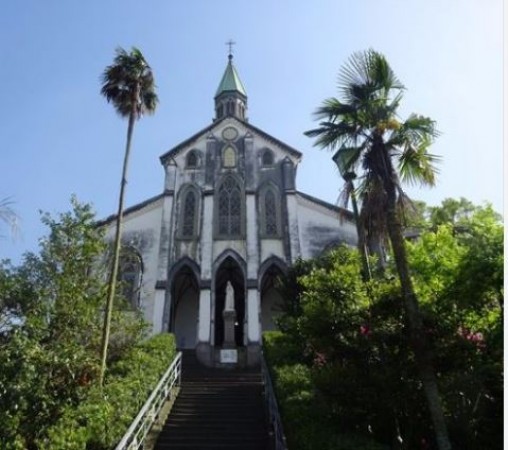
Oura Church, also known as the "Oura Tenshudo," holds a significant place in the history of Japan and its relationship with Christianity. Situated in Nagasaki, this elegant and historically rich church is renowned for being the oldest Christian church in the country. With its intricate architecture, storied past, and lasting impact on the region, Oura Church stands as a testament to the resilience of faith and the enduring cultural heritage it represents.
Christianity's introduction to Japan can be traced back to the 16th century when Portuguese traders and Jesuit missionaries arrived on Japanese shores. They brought with them their religion, making efforts to spread the teachings of Christianity among the local populace. Over time, the religion gained some traction, but it also encountered resistance and underwent periods of persecution.
Also Read: The Groote Kerk: Oldest Church of South Africa
Oura Church was built in 1864, during the Bakumatsu period (the end of the Edo era). It was constructed by French missionary Bernard Petitjean, who was instrumental in establishing the church and propagating Christianity in Nagasaki. The church's architecture is a unique blend of Western and Japanese styles, reflecting both the cultural exchange that occurred during the era and the adaptability of Christianity to local traditions.
The structure's exterior features a mix of Gothic and Romanesque elements, with its grand spire reaching for the heavens. The beautiful stained glass windows, imported from France, bathe the interior in a kaleidoscope of colors, creating a serene and spiritual atmosphere. Inside, the wooden altar and pulpit showcase traditional Japanese craftsmanship, fusing the essence of two distinct cultures.
Also Read: The Feast of the Transfiguration: Revealing the Divine Glory of Christ
Oura Church is not only a testament to the spread of Christianity but also a symbol of the perseverance of the "Hidden Christians." During the Edo period, when Christianity was officially banned, many believers continued to practice their faith secretly. These clandestine Christians, often called "Kakure Kirishitan," risked their lives to preserve their beliefs. Oura Church, upon its establishment, played a crucial role in bringing these hidden Christians back into the open and reconnecting them with the broader Christian community.
One of the most remarkable events associated with Oura Church is the "Miracle of the 26 Martyrs." This incident took place in 1597 when a group of 26 Christians, including six European Franciscan missionaries and 20 Japanese believers, were crucified in Nagasaki by order of Toyotomi Hideyoshi, the ruling shogun at the time. The reason behind their execution was to suppress the spread of Christianity and foreign influence in Japan. The martyrs' sacrifice became a powerful symbol of Christian devotion, and they were canonized as saints by the Catholic Church.
Also Read: Coptic Orthodox Church of Alexandria: A Testament to the Endurance of Christianity
Oura Church's significance extends beyond its historical and architectural value. It has also played an active role in promoting intercultural understanding and peace. In 1962, Pope John XXIII visited Nagasaki and delivered a speech at the church, advocating for peace and nuclear disarmament during the height of the Cold War. This visit further solidified Oura Church's position as a symbol of peace and reconciliation, transcending religious boundaries.
In recognition of its historical importance, Oura Church was designated as a National Treasure of Japan in 1933. The Japanese government, along with the Catholic Church, has made concerted efforts to preserve and maintain the church, ensuring that future generations can continue to appreciate its beauty and historical significance.
Also Read: Dura-Europos Church: Unearthing Ancient Christianity
Oura Church stands as a popular tourist attraction, drawing visitors from all around the world. Tourists and pilgrims alike come to marvel at its architectural beauty, learn about its history, and experience the serene ambiance that has touched the hearts of so many for generations.
Oura Church stands not only as a historical landmark but as a beacon of hope and resilience, representing the enduring power of faith and its ability to transcend cultural boundaries. As Japan continues to embrace diversity and cultural exchange, the church remains a living testament to the enduring spirit of the Japanese people and their ability to embrace and preserve their rich history and heritage. In the heart of Nagasaki, Oura Church stands tall, a living testament to the enduring legacy of Christianity in Japan, and a symbol of unity and peace for generations to come.